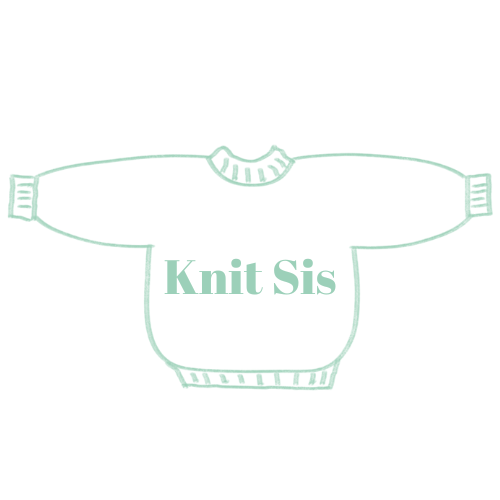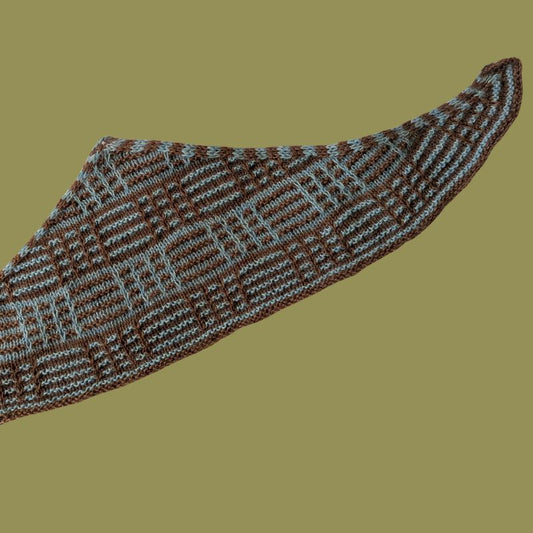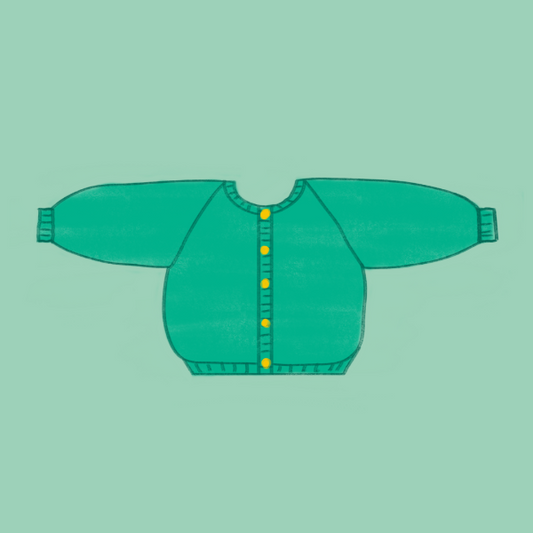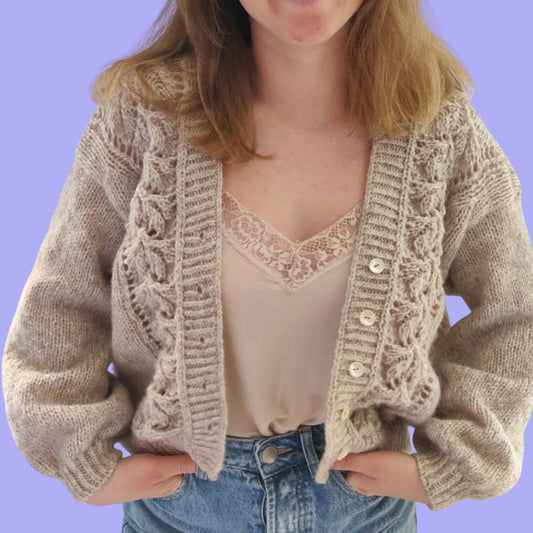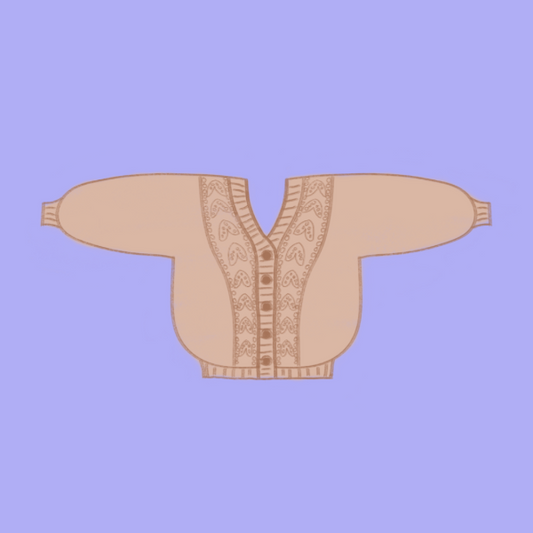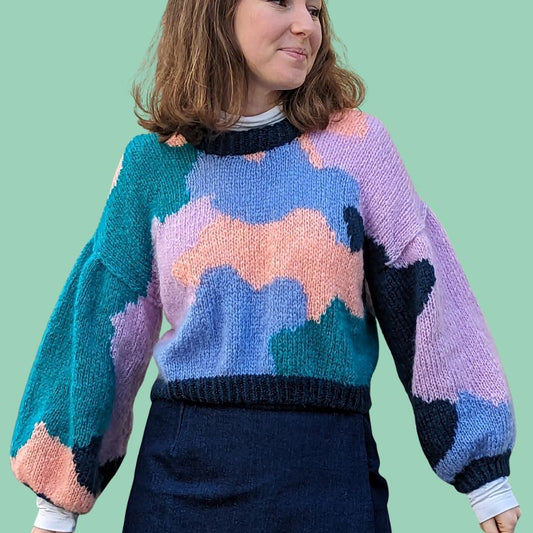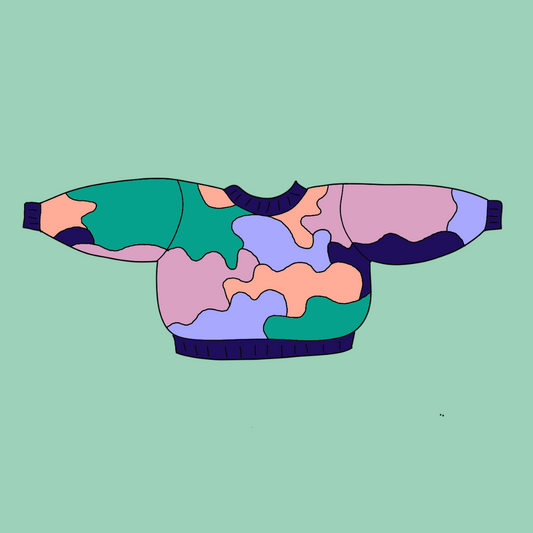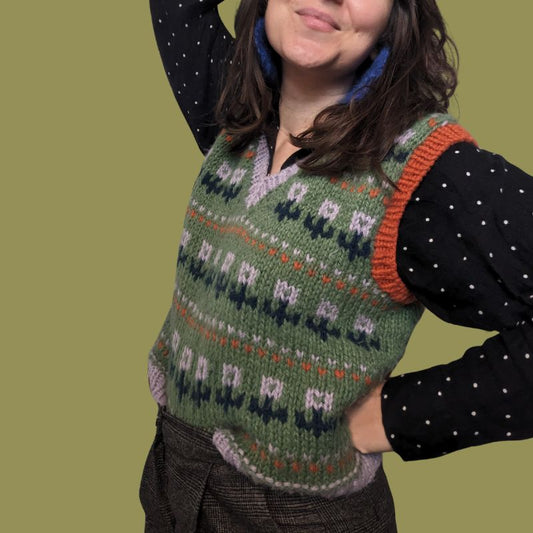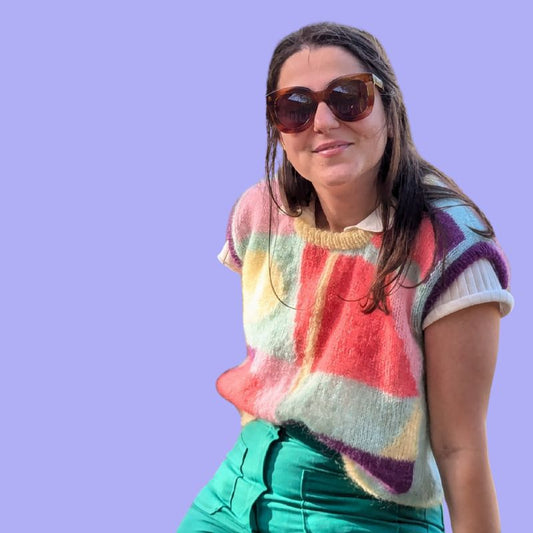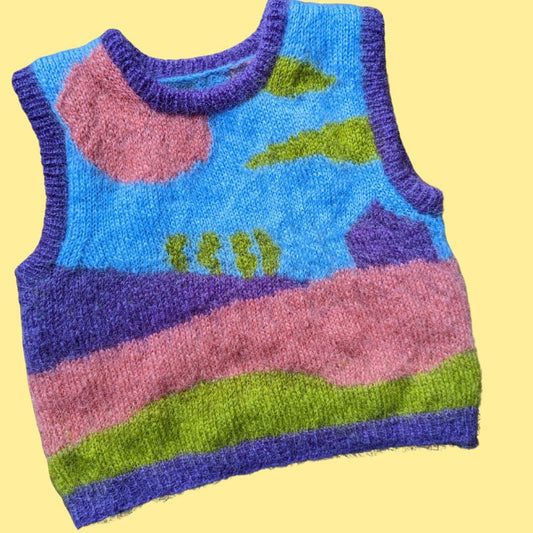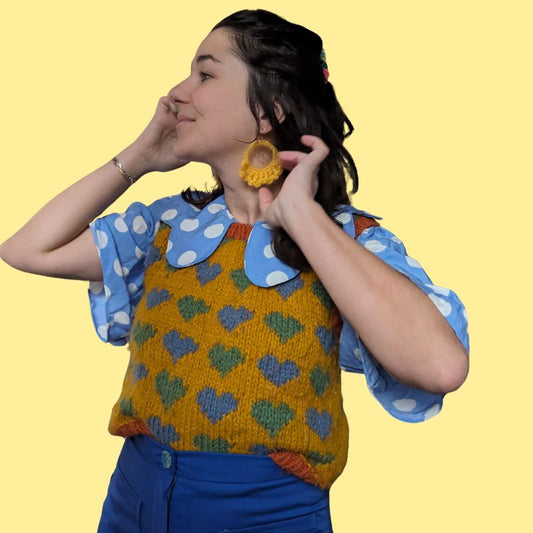Intarsia Knitting: How to Master This Color Technique?
Knit SisShare
Introduction
You've probably already dreamed of knitting a sweater or cardigan with a large, colorful pattern (a heart, a flower, a graphic pattern) ✨. But... when you were looking for the technique, you came across this slightly intimidating word: intarsia . It sounds complex, doesn't it?
Good news: we're Lenny and Louise, two sisters who learned to knit thanks to our grandmother (and her colorful 80s sweaters). We're going to show you step by step how to master intarsia —this color technique that seems difficult, but can become a real creative playground 🎨.
👉 And we promise: by the end of this article, you will not only have understood how it works, but also spotted some perfect models to get you started (even if you are a beginner).
What is intarsia in knitting?
Simple definition : intarsia is a color knitting technique that allows you to create large patterns (geometric, floral, figurative) by knitting each area with a different yarn, without running the wool behind the work (unlike jacquard).
In short:
▪️ Each “block” of color has its own little ball (or bobbin).
▪️ No threads pulling behind → the knit remains light and fluid.
▪️ Result: crisp, clean patterns that look like a knitted painting 🖌️.
📌 Remember : if you dream of a sweater with big hearts (like our Mon Amour), or a graphic tank top like Mondrian, intarsia is THE technique to learn.
Why knit intarsia? (and not jacquard)
We are often asked the question: “But what is the difference with jacquard?”
▪️ In jacquard , the threads are crossed at the back → it can pull, and the reverse side is not very pretty.
▪️ In intarsia , each color has its own area → no floating threads, the reverse is as clean as the front.
👉 Intarsia is perfect for:
▪️ Large isolated patterns (e.g. a big heart, a flower, a wave)
▪️ Geometric shapes (squares, triangles, asymmetrical stripes)
▪️ Modern graphic designs (we think of Sunrise 🌅 or Vasarely ).
📌 Takeaway : If you love modern design, intarsia opens up an endless world of creative possibilities.
Materials and preparation for intarsia
Before you start, prepare your ground well:
1️⃣ Separate balls (or yarn butterflies) for each color block
2️⃣ Suitable needles (circular or straight depending on your project)
3️⃣ Knitting pattern (often in the form of a colored grid)
4️⃣ A good dose of patience 🧘
💡 Our sister tip: prepare small spools of yarn (rather than juggling whole balls). This prevents knots and makes the experience much smoother.
How to knit intarsia: step by step
Here's the simple method to get started:
1️⃣ Start your knitting with the first color.
2️⃣ When you reach the area of a new color, cross the threads to avoid holes.
3️⃣ Continue with the new color, leave the other one waiting.
4️⃣ Repeat with each change.
👉 The secret: cross the threads at each transition, always in the same direction, for a clean result.
📌 Knit-sis tip : At first, your yarns may get tangled. This is normal! Get into the habit of detangling regularly. We learned this while knitting the very first prototype of our sweater. Splashie (and trust us, there were some epic knots 😂).
Common Mistakes (and How to Avoid Them)
▪️ Forgetting to cross the wires → result: holes.
▪️ Pull too hard → the pattern will distort.
▪️ Do not block the knitting → the colored areas will curl.
👉 Don't panic: every mistake is fixable (and above all... educational). We made dozens of them before getting our intarsias clean.
Our favorite models for starting intarsia
If you want to move from theory to practice, here are some Knit-sis patterns that are perfect for practicing:
▪️ Splashie Sweater – fun, colorful, accessible even for beginners 🎉
▪️ Tulip Vest – a retro floral pattern that always makes an impact 🌷
▪️ Mon Amour – a big central heart, perfect as a first project 💕
💌 Download our free Coquelicot pattern 🌺 to test the quality of our explanations before embarking on an intarsia model.
Conclusion
Intarsia can seem intimidating, but I promise: with a little method and the right model, you'll quickly love playing with colors 🌈.
Remember:
▪️ Each color has its dedicated thread
▪️ Always cross your threads to avoid holes
▪️ Choose an accessible model to start with (favorite for Splashie )
👉 And if you want to go further, discover our entire Intarsia collection and subscribe to our newsletter to receive our next exclusive tutorials 💌.
